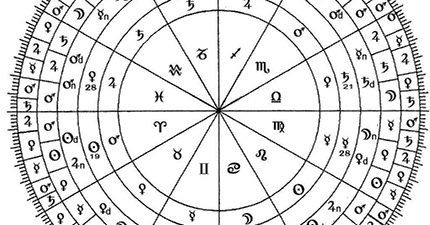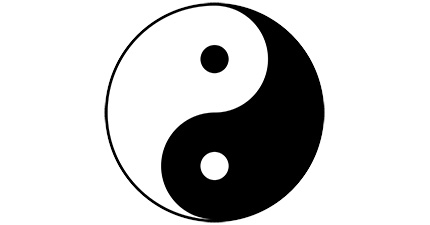Ding Fire is the fourth of the ten Heavenly Stems in Chinese style fortune telling. What are the Heavenly Stems and what do they show us? They don’t give any information about life or our circumstances—instead, they show us our ideas. Ding Fire is the fourth archetype in Chinese cosmology. It is the flirt and the performer. If you want to check to see if Ding Fire represents your personality in Chinese astrology, find a bazi chart calculator and look for your day stem. Your day stem is the anchor of your day and represents your personality.
(I titled this article “day master” because the day stem of your chart is often translated as “day master” and this is the most common search term related to the concept. However, you can call your day stem your day destiny, your chart ruler, or simply your day stem.)
Ding Fire is yin fire—it is a little flame. I remember, back when I was in elementary school, they would teach us how to start fires in case we got caught in the wilderness. It was so hard! To start a fire, you have to choose the right type of starter stone. You have to catch the spark at the right moment. You have to feed the little flame and you have to protect it from the wind because even gentle wind can put it out.
But when the fire grows? It becomes a wonderful, warmth giving heart.
That’s the energy of Ding Fire.
Ding Fire people are lovers. They’re impossibly good at flirting. They set the gold standard on that one. They are charismatic and fun with the neighbors when they want to be. They know how to spark attention because they are not the overwhelming glare of the sun but that type of small heat that everyone wants to notice and feed.
A small fire asks for your attention. They request it nicely. They cajole it out of you. They ask questions that light up your interest and they’ll speak in a whisper because they know that people listen for whispers and recoil at yells. Everyone wants to give shelter to a small fire person. Everyone sees that sharp and inviting brilliance and tries their best to encourage the light into more life.
The first thing that I always notice about a Ding Fire person is always just their warmth. A person’s warmth is hard to describe. You sense it in their scent when they’re not smiling and you sense it in their laugh when they’re about to come over. As people, our warmth comes from our body heat but you don’t always have to hold a person to feel how warm they are. Ding Fire people are warm people. They are gentle and warm people.
Everyone likes to gather around a bonfire. If you don’t have a fire, then use a TV. Everyone likes to gather around a TV. If you don’t believe me, try watching a show in a common space. People passing by will flock around and join you. We are looking for that communal fire. Ding Fire is a bonfire or an electric spark.
Ding Fire people are good artists. They create images by flickering, casting spells on people.
The biggest difference between Bing Fire and Ding Fire lies in their relationship to stability. Bing Fire is yang fire and is as reliable as the sun. Ding Fire is a flame and the heat of flame fire is unpredictable. That’s why Ding Fire is yin. Yang is constant and yin is changeable.
But you know what? Ding Fire actually does well in winter. Do you know why? Because winter is the season of lighting fires. Ding Fire is able to survive very well in the coldest of seasons as long as it has just one thing.
Ding Fire people go where they are needed. They are warmhearted people and they shine brightest when they bring their warmth to the coldest of places. They have the gravity needed to transform a ruthless winter into an inviting home. If your Day Stem is Ding Fire and you were born in winter, then you already know what it’s like to fight brutality with intimacy.
Yin stems are less constant but more resilient than yang stems. Bing Fire, as the sun, grows cold and distant during a coldhearted era. Ding Fire is sharp and brings relief. As the yin version of fire, fire being the most yang of the five movements, Ding Fire is a bit less resilient than other yin stems but it can still fast an entire winter. It is able to keep going as long as it has two things—nurture and protection.
To start a fire, you have to feed it. You have to feed it little kindlings first, reading the size and shapes of the flames to understand what your fire needs. You have to move onto larger dry branches next. You have to give your fire stability with logs.
In wuxing theory, wood is fire’s mother spirit. For fire, wood is nurture and home. Wood is resource. Ding Fire people want to give warmth and inspiration but they need to be fed. This is very important. Bing Fire people do not need to be fed or encouraged to share their opinions and inspire but Ding Fire people do. Ding Fire needs praise, needs encouragement and celebration. They need to know that their friends have their back.
The most important thing, for Ding Fire, is mother spirit. As long as Ding Fire people have support, they can go through any season. They can even light up dark eras, bringing clarity to uncertainty, that bring louder spirits into despair. Ding Fire people can keep their warmth going as long as they receive encouragement even when they face the more difficult challenges in the bleakest of times. That’s the magic of fire coming down to earth.
Some of the old astrologers say that Ding Fire people are clingy. They use that word—clinging. Yes! Ding Fire clings to their loves ones, warming them and nurturing them. Ding Fire is the thing that we use to cook which is the basis of all community. Ding Fire people will ask you to text them back. They will call you first if they haven’t heard back from you. Yes, they are clingy (especially if they are born during the winter). They should be. They do not bind people together like Yi Wood, making ethical disciplines. They use one thing to bring people together—their own clinginess and their desire for attention. Ding Fire asks for attention and they end up conjuring a friend group into existence.
Ding Fire is the conjurer. They make things happen. They make food happen, they make images happen, they make groups happen. They are performers because performers are ritualists. Ding Fire people make very good movie stars or filmmakers because they animate what has fallen still. A good example of a Ding Fire person is Adam McKay. Adam McKay brings the fire to muddled situations. He speaks in a way that makes you feel like you know him personally even though he is a famous filmmaker. His films are often about attempted intimacy under cold hearted tyranny.
The final form of Ding Fire is smoke. Even when Ding Fire has gone out, it leaves a pungent spell in its wake. You can’t ignore smoke. The scent is just too strong. It gets everywhere—on your clothes, your hair, and skin. It stains the walls. Smoke tells you where the danger lies and it tells you how the wind is blowing.
Ding Fire people are artists. They have an almost prophetic vision but that’s just because they are looking at the very obvious things that no one else seems to see. They speak about the things that everyone wants to ignore. Where there is smoke, there is fire. Ding Fire people warn you about the dangers lurking close by. They try to get your attention. That is their method of protection.


